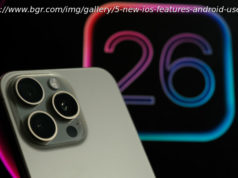The Samsung Galaxy XR could be an Apple Vision Pro killer for just over half the price, and the first big step forward for the Android XR mixed reality platform. I tried it out, and I’m impressed.
Samsung has debuted its new mixed reality headset, and it’s a big step forward for immersive technology. The Samsung Galaxy XR is the first device to use Google’s Android XR platform, with cutting-edge technology and intuitive eye- and hand-tracking-based controls. It’s the culmination of Samsung’s Project Moohan that was announced late last year, and is not only a showcase of cutting-edge technology, but also a foundational device that could set the standard for future Android XR hardware, including headsets, smart glasses, and more. I had the chance to test the Galaxy XR at Samsung’s launch event, and it left a strong impression.Design: A Better Fit and Feel Than the Vision Pro
In both design and philosophy, the Galaxy XR invites clear comparisons to Apple’s Vision Pro. Like Apple—which avoids the term “mixed reality” in favor of calling the Vision Pro a “spatial computer”—Samsung positions the Galaxy XR as the first in a “new category of AI-native devices” built for immersive, multimodal AI experiences. Let’s be honest, though: These are both mixed reality headsets. And they’re currently the most advanced ones you can buy, with next-gen specs and interaction models that far exceed anything else on the market.
The first thing I noticed about the Galaxy XR is how much easier it is to wear than the Vision Pro. It weighs 19.2 ounces to the Vision Pro’s 26.4, which is still pretty hefty for any device you’re going to wear on your head. The weight of Apple’s headset is exacerbated by its being very front-heavy, at least with the Solo Knit and Dual Loop straps it originally came with. It’s tiring to wear for any long period of time, and while the Dual Knit strap included with the new M5 Vision Pro might alleviate this problem, I haven’t tried it out yet, and it doesn’t change the overall heft of the pound-and-a-half-plus chunk of metal pressing against your face.
The Galaxy XR immediately felt lighter, and its strap distributed its weight better than the Vision Pro configurations I’ve used. The strap is similar to the Meta Quest Elite strap, which is available as an option with Meta’s VR headsets. It features a large, cushioned back ring that fits snugly against the back of your head, complete with a wheel for easy loosening and tightening. Getting it secured was easy, and it stayed in position with no wiggling or shifting during the demo, whereas I often need to adjust the Vision Pro against my face.
Once the headset was strapped on, I could clearly see through the lenses of its displays in front of my eyes and physically through my lower periphery. The Galaxy XR’s design blocked out all light from eye-level and above, but unlike the Vision Pro, it left the area below completely open. This compromised the sense of immersion the headset would have otherwise provided, but it did let me stay more aware of my surroundings, and the pass-through camera view was aligned perfectly with my ordinary vision, so I never felt disoriented.
Clip-on light blockers that snap onto the headset below the lenses will be included, and I had the opportunity to try them out during the demo. They definitely improved the headset’s immersiveness, though they still let more outside light bleed through than the Vision Pro’s shroud. I’ll have to use it for a longer period of time before I can say whether I can get used to either configuration.Controls: You Use Your Hands (and Eyes)
For controls, the Galaxy XR offers multiple options that take advantage of its extensive internal and external cameras. My demo relied entirely on hand tracking, following my hands and allowing me to interact with the interface using points, pinches, and other gestures. Pointing with a finger aims a cursor at whatever you’re pointing at, regardless of the distance, and pinching once works like a click or a tap. Pinching and holding allows you to drag objects for actions such as moving windows or scrolling through a map. It’s mostly intuitive, and I could immediately jump into using the software in the demo. The only hitch was the two-handed pinch-and-hold gesture for rotating some objects. It would register as a single pinch and hold half the time, and I had to make sure that both hands were moving at the same time for it to work.
Home
United States
USA — IT Samsung Galaxy XR: The Future of Mixed Reality Might Be Lighter, Cheaper,...






